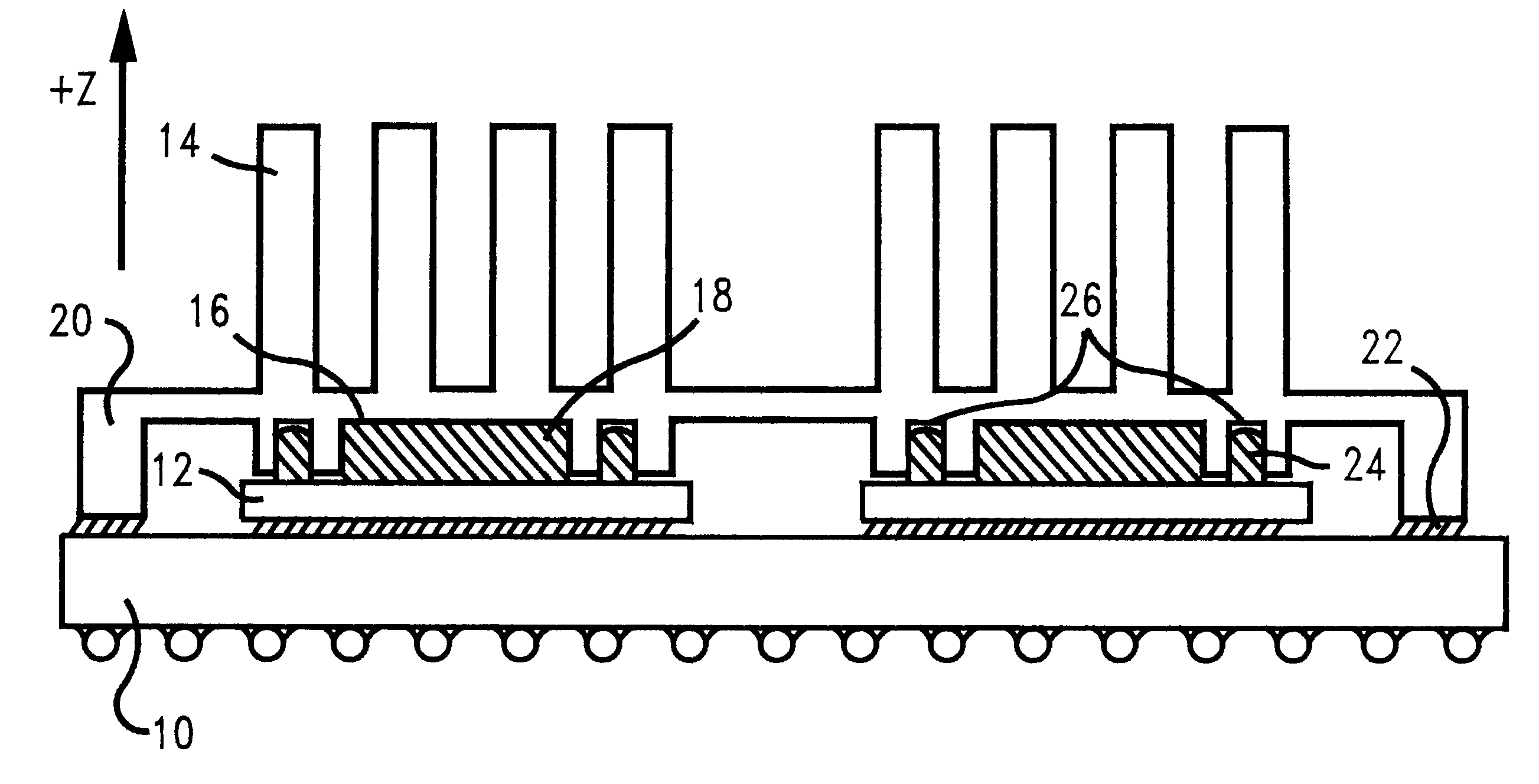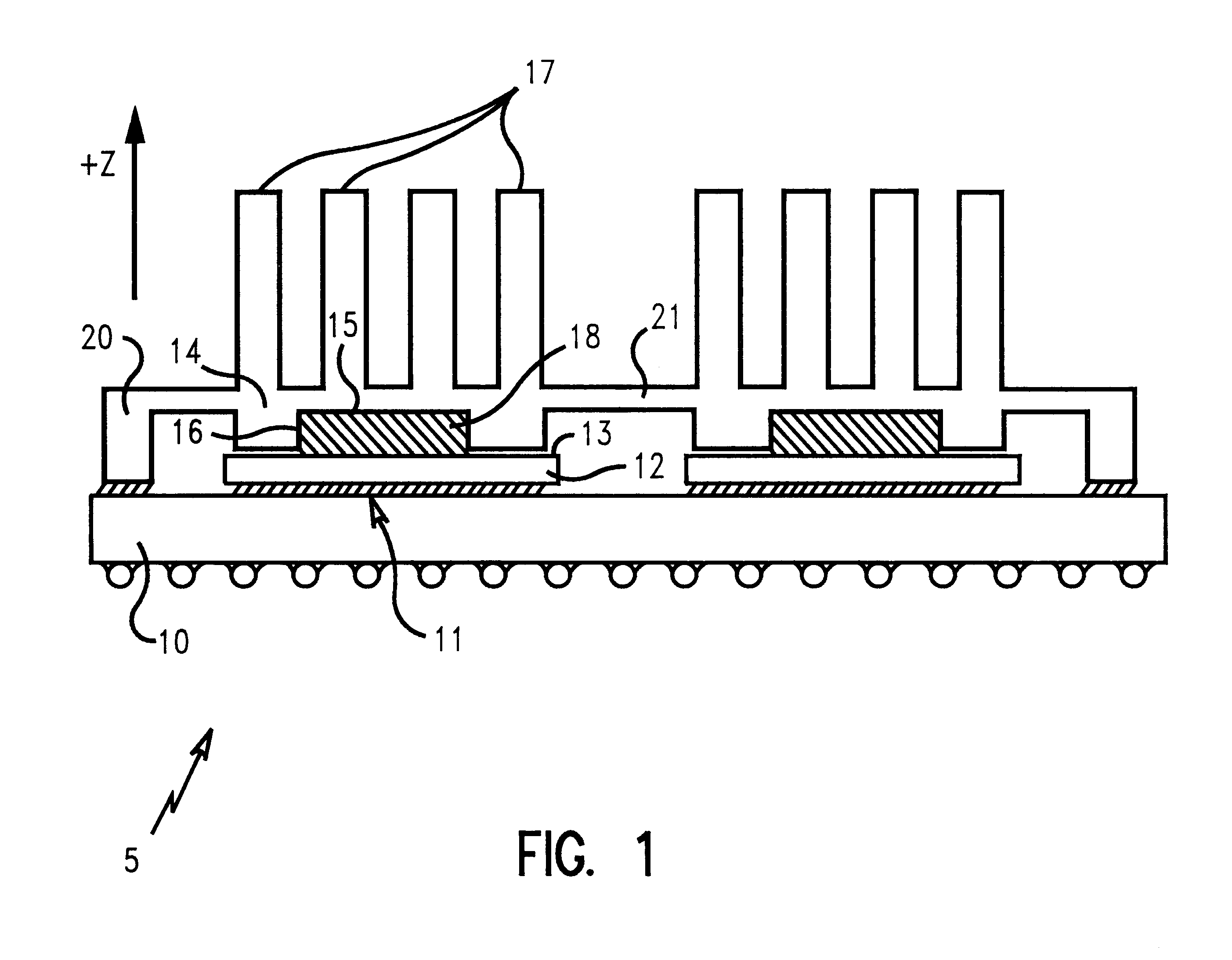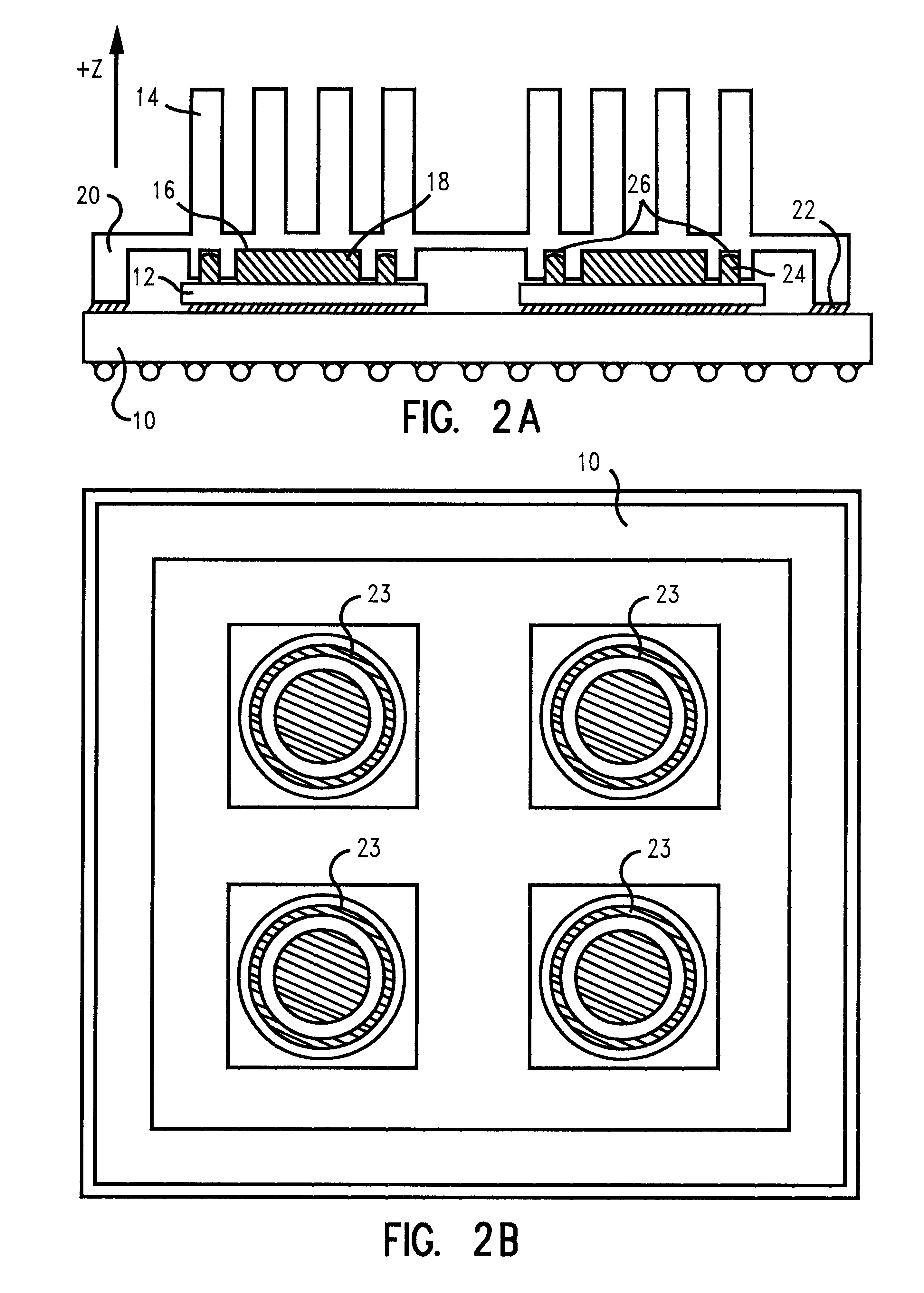Thermal enhancement approach using solder compositions in the liquid state
a technology of liquid state and composition, applied in the direction of printed electric component incorporation, electrical apparatus construction details, lighting and heating apparatus, etc., can solve the problems of insufficient power dissipation, inability to efficiently dissipate heat energy, and inability to meet the much higher power allotment being contemplated for future designs, and achieve low thermal resistance
- Summary
- Abstract
- Description
- Claims
- Application Information
AI Technical Summary
Benefits of technology
Problems solved by technology
Method used
Image
Examples
embodiment
Preferred Embodiment
FIG. 1 depicts a multi-chip electronic module package 5. Integrated circuit chip 12 with top surface 13 is shown connected to substrate 10 through C-4 attachments 11. Heat exchanger 14 is located above the IC chip and has a cavity 16 with bottom surface 15 for placement of the thermal conducting material. The heat exchanger 14 is structured to have considerable mass and surface area in order to efficiently transfer the heat energy from the IC chip to the air. Depicted in FIG. 1 is heat exchanger 14 with solid fingers 17 arranged for optimum heat dissipation to the ambient air. Ceramic cap 20 and heat exchanger 14 are either attached such that they form a single cover over the electronic module's IC chip and substrate, or initially formed as a single structure. Cap 20 is bonded to the top surface of substrate 10. A bonding or solder composition 18 is affixed within cavity 16 of heat exchanger 14. The heat exchanger element over each individual IC chip is connected...
PUM
| Property | Measurement | Unit |
|---|---|---|
| liquidus temperature | aaaaa | aaaaa |
| liquidus temperature | aaaaa | aaaaa |
| eutectic temperature | aaaaa | aaaaa |
Abstract
Description
Claims
Application Information
 Login to View More
Login to View More - R&D
- Intellectual Property
- Life Sciences
- Materials
- Tech Scout
- Unparalleled Data Quality
- Higher Quality Content
- 60% Fewer Hallucinations
Browse by: Latest US Patents, China's latest patents, Technical Efficacy Thesaurus, Application Domain, Technology Topic, Popular Technical Reports.
© 2025 PatSnap. All rights reserved.Legal|Privacy policy|Modern Slavery Act Transparency Statement|Sitemap|About US| Contact US: help@patsnap.com



